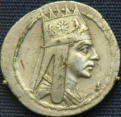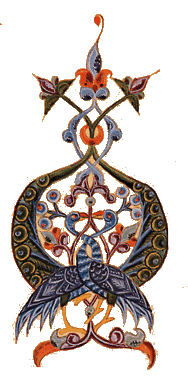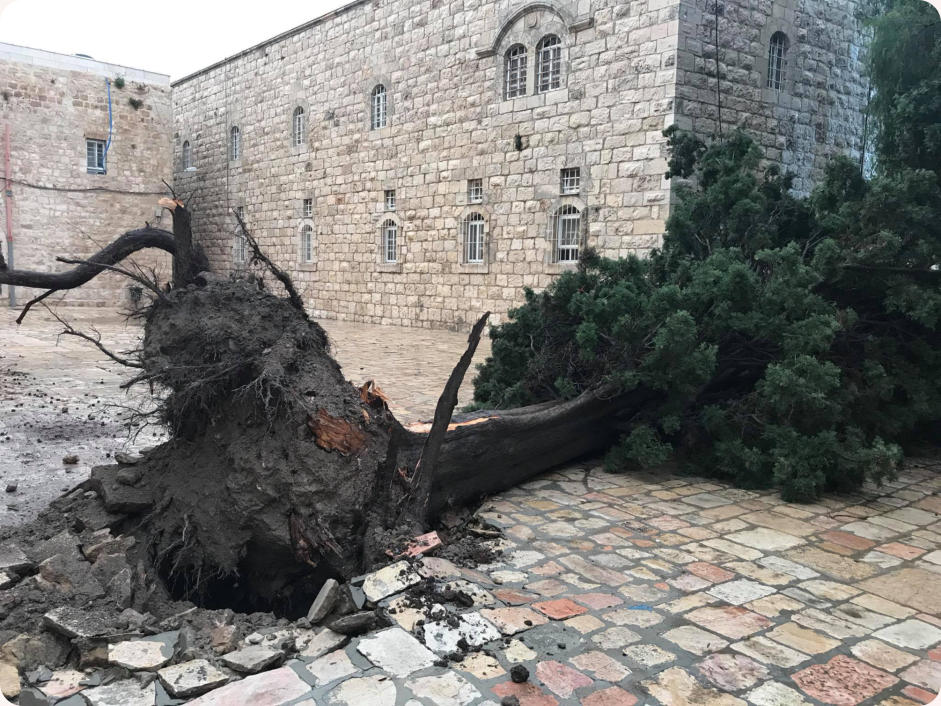

Armenian Jerusalem

This project has been supported by the Gulbenkian philanthropic Foundation, the Armenian Patriarchate of Jerusalem, and members
of the worldwide Armenian community. Reproductions of the genealogical documents [domar’s] are courtesy Photo Garo, Jerusalem.
© Copyright 2007 Arthur Hagopia
It was a bleak December night, with the rain and the wind chasing each other
across the walls of the Old City. Entwined in a spirited saraband this harsh winter,
the roiling twins played havoc along the cobblestoned alleys and domed rooftops and
ran rampant in the open spaces.
In a corner of the school playground, in the ancient monastery of the Armenians of Jerusalem, a forest of tall trees stood silent sentinels, in age-old defiance against the ravages of nature. But that night in the end of the year, the relentless barrage proved too much for the aging giant tree that towered over all the others, and with a roar of anguish, it toppled on its side and came crashing down onto the cobblestones, writing finis to a glorious history of fortitude and endurance. What a fall was there that night - it was more than just a conifer that fell. The unprecedented loss was grievous for the denizens of the convent, for more than anything else it had symbolized t h e lives and struggles, the triumphs and despairs of the survivors and descendants of survivors of a horrendous genocide. It had witnessed the ragged arrival of the refugees, their grim determination to hang on and re- invent their shattered lives bolstered by their faith and hope for a better tomorrow for their children and their children's children. As little ones we had congregated under its protecting branches, seeking shelter from sun and rain and hatching plots to discomfit unpopular teachers. And we left our marks on that tree: cartouches and love hearts carved onto the bark. Uncomplainingly, the tree tolerated the incursions on its trunk, amassing the memories into its cave of timeless chronicles. For over a century and a half the tree had towered resolutely and regally over the school playground, as nations went to war in two global conflagrations and spread havoc and devastation on the continents of the planet. It bore witness to history's most inglorious travesties: the eradication of teeming cities by horrendous bombs and the genocide of two defenseless people. Millions and millions of men, women and children, innocent victims of hearts gone mad, vaporized. And at its threshold, the Semitic cousins, the Arabs and the Jews, raised their swords and spears against each other and shed their blood on the hallowed ground of the prophets. That it escaped unscathed from all those catastrophes was nothing short of a miracle: despite being unprotected against the ravages of both man and nature, the tree held its ground against the unrelenting horde of daunting banshees: bombs and bullets, wind, rain and hailstones. But it also had its moments of glory: it was there when a few paces away, the first sod was turned for the construction of the school and the library, gifts of a great man and a great dynasty, only a few years after the last Ottoman overlord had surrendered control of the city to the British Mandate. It had been there when the second Napoleon of the French, and the first chancellor of Germany strode the planet like giant colossus. It remained inviolable until the very end, for no one had ever had the temerity to climb it. Not because it was unclimbable, but because to subjugate its majesty to groping hands and uncouth feet, would be an unthinkable violation. Untouched by the dubious inroads of progress and their resultant ills of pollution and acid rain, it retained its vigor into its ripe old age over the decades. Who planted that mighty legend? Who tended the sap through its youthful growth? The name and identity of the gardener with the magic touch are lost in the annals of the Armenians of Jerusalem. Perhaps somewhere in the archives of their Patriarchate some solicitous scribe has jotted down the name and date. Perhaps the revelation is inscribed in the colophon of some ancient tome, gathering dust in some dark corner. No one will ever know - but everyone will mourn the passing of the behemoth conifer, and wonder, when will there be such another?
























